Let’s get to know Tarquinia, in Lazio!
Tarquinia, in Lazio, is an ancient Etruscan city that presents itself in an elegant but simple way, blending different historical periods. The city offers us a journey through time, where we can discover towers, churches, medieval walls, and unique beauties. Today we are going to visit the fantastic Tarquinia! Here at Your Travel to Italy with Ana Patricia you make the trip of your dreams !!! ALSO: see our “Accommodation in Italy – Tips for your holidays!”.
Our Introduction
Tarquinia, in Lazio, is a small town with just over 16,000 inhabitants and is just an hour and a half from Rome by car. With its valuable monuments and museums, it greets its visitors with elegance, but without losing its simplicity. Here you will find important archaeological sites recognized as world heritage by UNESCO and impressive beauties. With a privileged geographic position, the city facilitates the access of its visitors; without a doubt, it is worth a visit.
Tarquinia’s history
Tarquinia’s origins are unclear, but some historians argue that the place has been a bishopric since the fourth century. Until the 19th century, the city was called Corneto, probably because of the presence of cone-shaped trees, or the mythical King Corito, founder of the city and ancestor of Aeneas. In 1872, the city was renamed Corneto – Tarquinia, and only in 1922 did it have a single name: Tarquinia.
The name Tarquinia comes from the Etruscan Tarkna (Latin Tarquinii). Over the centuries, the city saw the birth of palaces and churches by the hands of the Papal State and the nobles of the time, who had a high regard for the city’s citizens. They also invested in commerce: the city is about ten kilometers from the coast, and there was one of the main ports of the time, Gravisca, which was always famous for its strategic position in the Mediterranean.
The city rose and developed into an incredible geographical position that dominated the valley of Marta, an emissary from Lake Bolsena. The watercourse ensured contacts with the interior and with other cities, thus contributing to the economic, political and social growth of the city. The territory where Tarquinia is located extends from the woods to the sunny beaches of the Tyrrhenian coast. This offers us attractions during all seasons of the year.
1) Let’s get to know Tarquinia, in Lazio! THE HISTORIC CITY CENTER
Let’s start our tour from the historic city center. One can easily explore the city on foot. Through its streets, you can observe incredible monuments from different historical periods. The medieval walls are still perfectly preserved and the towers of Tarquinia are imposing.
2) Let’s get to know Tarquinia, in Lazio! THE SAN GIUSTO BARRIER
It is impossible not to mention the San Giusto Barrier, from the beginning of the 20th century. The location offers us a panoramic view of the coast that delights even the most demanding eyes. Within the walls you will find several historic buildings. One of the most beautiful is the Town Hall, which houses the majestic Frescoes Room, with paintings dating from the 16th-17th centuries.
3) Let’s get to know Tarquinia, in Lazio! THE VITELLESCHI PALACE and THE ARCHAELOGICAL MUSEUM
Another important building is the 15th-century Vitelleschi Palace. Here is one of the most beautiful museums in Italy, the National Etruscan Archaeological Museum. The building presents us with a magnificent façade where we can observe Gothic and Renaissance elements, which attests to the smooth change of artistic and architectural style that took place at the end of the 15th century.
A little about the Museum
About the Museum, one word: unmissable! There you will find three floors with the largest collection of Etruscan art in the world. Among various items, there are sarcophagi, vases, dishes, ceramics, statues, ancient coins and other various exhibits.
On the ground floor, you will find, in chronological sequence, the stone materials of the museum, which include the sarcophagi dating from the middle of the fourth century. The most precious are in room 10 and are carved Greek marble sarcophagi belonging to some of the most prominent families in Tarquinia. The highlights are the sarcophagi of Laris and Velthur, both belonging to the Partunus family.
On the first floor, you can see a rich collection of finds from the period ranging from Villanovan to the Roman period, which document the evolution of Greek and Etruscan painting. It is impossible not to mention the tombs represented by the famous Bocchoris vase, which dates from the 7th-6th century BC, as well as the numerous Greek vases with black figures from the 6th century BC. On the same floor, you’ll find a beautiful selection of gold and silver Etruscan coins from the imperial period. Most of them were found in the excavations of the Roman colony of Gravisca; there are also some gold jewelry made with the famous technique of granulation and displayed in the window of the Ballroom.
On the second and last floor, you can enjoy the beautiful view of the city. Also on this floor, you will find some tombs painted with frescoes that have been fully preserved and reconstructed. If you like museums, history, culture and art, don’t miss this amazing place!
Tip:
- The museum’s opening hours change according to the seasons. To purchase tickets in advance and check opening hours information, you can click HERE!
- Good to know... You can buy a combined ticket to have access to both the museum and the Necropolises.
4) Let’s get to know Tarquinia, in Lazio! THE BRUSCHI PALACE and THE ARCHAELOGICAL MUSEUM
The Bruschi Palace is also worth mentioning! With important pictorial representations in its interior, it has a Renaissance style, but dates back to the 19th century. There is also no lack of fountains and fountains from the 20th century, which were erected right after a renovation in the city’s water system.
5) Let’s get to know Tarquinia, in Lazio! THE CHURCHES
Also unmissable are the churches in the city, bearing in mind that most of them date, mainly, from the Romanesque period.
Noteworthy is the church of San Martino, which despite having been renovated several times over the centuries, maintains its original beauty and is the oldest in the city. It mixes different styles and is of a beauty that draws attention.
We also need to mention the beautiful church of St Mary in Castello, with its Romanesque style and touches of influences from the Alps, Lombardy and the Arabs. This church, in fact, was the city’s cathedral until 1435.
There are also several churches in baroque style, such as the Church of the Suffrage and the Chapel of the Cross, which, today, is used as the seat of parish activities. There are also convent headquarters, among which we can highlight the Convent of St Francis, which dates from the end of the 13th century and early 14th century. The convent comprises a Gothic-Romanesque church, a cloister and a Renaissance well.
Be sure to visit the city’s main church, the Cathedral of Saints Margaret and Martin. It has been the city’s cathedral since 1435, and it houses numerous 16th-century frescoes depicting the stories of the Virgin Mary. The Cathedral was built around 1260 and is very well located in the square of the same name, just a few steps from Vitelleschi Palace. It was elevated to Cathedral on December 5th, 1435, and enlarged by order of Bishop Bartolomeo Vitelleschi. It was destroyed by fire in 1643 and rebuilt shortly thereafter. In the 19th century, it was renovated in neoclassical style and, once again, enlarged with the addition of nine altars. The facade has a staircase and is flanked, on the left, by the bell tower. At the bottom there are three portals, and at the top, a barred window flanked by the statues of the Saints. The interior of the church is divided into three naves and preserves elements of the structure prior to the fire in the presbytery, which were restored. Among the most beautiful works housed here, you can admire the frescoes in the choir by Antonio da Viterbo, known as il Pastura, which dates from the 16th century and, as we have already mentioned, features images of Mary.
To access the complete map of the historic center of Tarquinia, you can access this link: MAP OF THE HISTORICAL CENTER OF TARQUINIA.
6) Let’s get to know Tarquinia, in Lazio! THE NECROPOLISES
It is impossible to speak of Tarquinia and not mention the Etruscan Necropolises of Montrozzi. To visit this place is to understand, in fact, the grandeur, refinement and artistic precision of the Etruscan people.
In these necropolises you will find more than 200 beautifully painted tombs. Monterozzi’s Necropolis frescoes represent the largest extant nucleus of Etruscan art and are also the most important document of all the ancient paintings that appeared long before the Roman imperial era. The tombs of aristocratic families were always decorated and usually brought magical-religious scenes that portrayed happy moments that the dead had in life, so it is common to see images of banquets, dances, games and parties. The colors are always bright and harmonious and the whole work is splendid! Among the most beautiful tombs we find: the Tomb of the Leopards, the Tomb of the Lionesses, the Tomb of the Warrior, the Tomb of Hunting and Fishing, the Tomb of the Hunter, and the Tomb of the Lotus Flower.
To access the map of all the tombs, I invite you to access the following link: MAP OF THE TOMBS OF THE NECROPLES OF TARQUINIA.
Tip:
- The opening hours of necropolises change according to the seasons. To purchase tickets in advance and check information on opening hours, click HERE!
- Good to know… you can buy a combined ticket to have access to the Necropolises and the Estruscan Museum.
7) Let’s get to know Tarquinia, in Lazio! THE TOWERS
What about talking about the famous towers of Tarquinia? The city has a series of imposing, beautiful towers, many of them well preserved and that show us all the beauty of a splendid city. The city towers were part of Tarquinia’s defense system. All date back to the medieval period and are true artistic treasures. The walls of the towers are made of ashlars arranged horizontally and joined with lime, sand and pozzolan (a type of cement). In the medieval period, each tower had a function: there were those for defense, others for services and some of them observation towers. Among the various towers, there is a very special one: the tower known as Matilde di Canossa. It was named after the presence of the homonymous countess in this area in 1080. The tower was fully restored in 1439 and is flanked by a fortified gate. Another prominent tower is the Barucci tower, which dates from the 11th century and has a magnificent square floor plan.
8) Let’s get to know Tarquinia, in Lazio! THE PORT OF GRAVISCA
After getting to know the best of Tarquinia, we head to the Port of Gravisca. Also called Porto Clementino, between the mouth of the river Marta and the Salt Reserve to the south, we find the archaeological area of Gravisca, an ancient Etruscan port that was “renamed” as Porto Clementino, a tribute to Pope Clement XIII who restored it in the years 700.
Before colonization by the Romans, this port was frequented by foreign merchants, mainly from Asia Minor. In the extreme south of the Etruscan center several remains of the so-called Greek Sanctuary of Gravisca were found. According to historians, the place was founded between 600 BC and 580 BC, and the sanctuary assumed the functions of an emporium, that is, it was an important center for commercial exchanges and also had religious functions. In this area were also temples in honor of Hera, Aphrodite and Demeter which, in Etruscan, were Ura, Vei and Tura, respectively. One of the treasures of the site is the Kantharos of Exechias, a valuable 6th century BC Attic pottery that also had a dedication to Apollo by the merchant Sostratos de Aegina. This only attests to how intense contacts with the eastern Mediterranean and the Greek world have been since the beginning of the city’s history.
9) Let’s get to know Tarquinia, in Lazio! THE SALINE DI TARQUINIA NATURE RESERVE
If you love nature, don’t miss the Saline di Tarquinia Nature Reserve. Here is the only salt mine in Lazio and one of the few that remain along the entire Italian coast. With over 150 hectares, the site is home to many species of birds that migrate every year, including the pink flamingo, the little heron, the heron, the seagull, the heron and many other species.
Here you can also spot foxes, porcupine squirrels and turtles. It is the ideal place for photographers and bird watchers.
- If you intend to visit the site, it is necessary to book the tour in advance: you can contact the Carabinieri Forestry, Environmental and Agro-alimentary Unit Command by telephone on +39 0766 864605 or, if you prefer, send an e- mail to [email protected] – All visits are guided!
10) Let’s get to know Tarquinia, in Lazio! THE TARQUINIA’S BEACHES
How about going to the beach? As we said, with a privileged position, the city offers us the best of both worlds: beaches and mountains. Tarquinia offers us several alternatives for those who love the sea! The longest and most well-equipped stretch of beach is on Lido di Tarquinia, just a 10-minute drive from the city centre. It is popular with locals and families with children, as it is a very quiet beach. Another interesting beach is Marina Velca, just 4 kilometers north of the Lido. Here you find Pian di Spille, which is one of the most beautiful open beaches on the entire coast.
What about a gastronomy event in Italy? I’ll take you in a tour!
Subscribe to our channel and receive more videos with information and tips about Italy. Don’t forget to leave that Like;)
Conclusion
Let’s get to know Tarquinia, in Lazio! For those in love with the history of the Etruscans, Tarquinia can be considered a true paradise! Furthermore, it is one of the most charming cities in the entire region of Lazio and offers us incredible options for traveling to the main cities nearby.
Are you insecure?
And if you feel insecure, have no time, and need help to organize your trip, don’t hesitate to contact me! I will love to help you make your dream trip to Italy come true. And how can I do that? Keep reading this post until the end and you will understand how we make your life and your trip much easier.
Did my post help you? If so, be sure to post your comment below, but if you still have questions just send me a message I will answer you as soon as possible!
An Extra Help for your Trip The best content from Your Travel to Italy! Learn more about our tours in Italy right now! Best regards from Italy

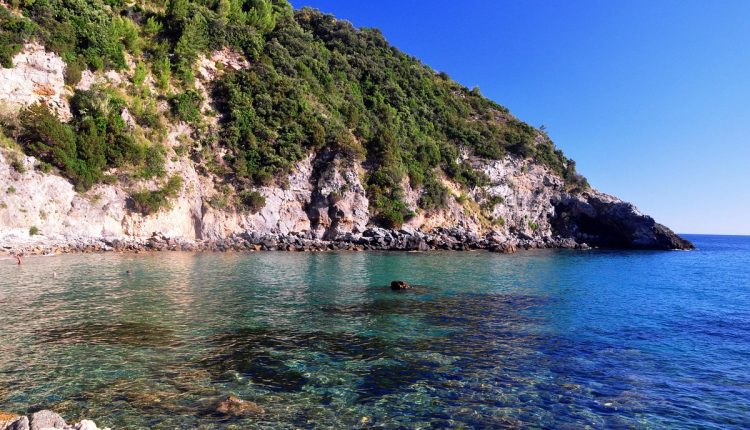
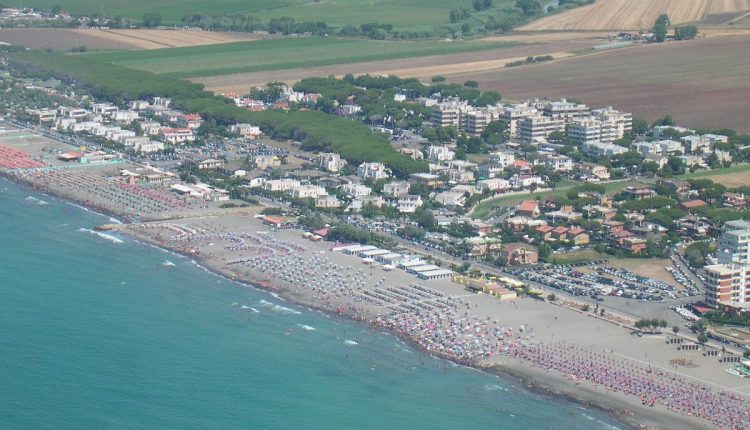

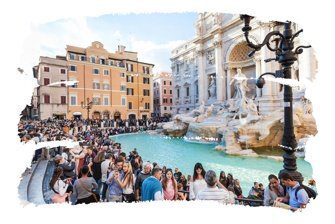
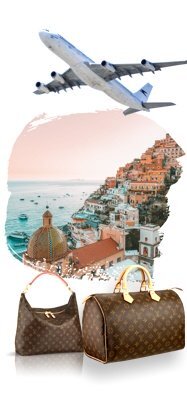
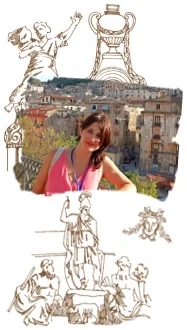

 Save money!
Save money!